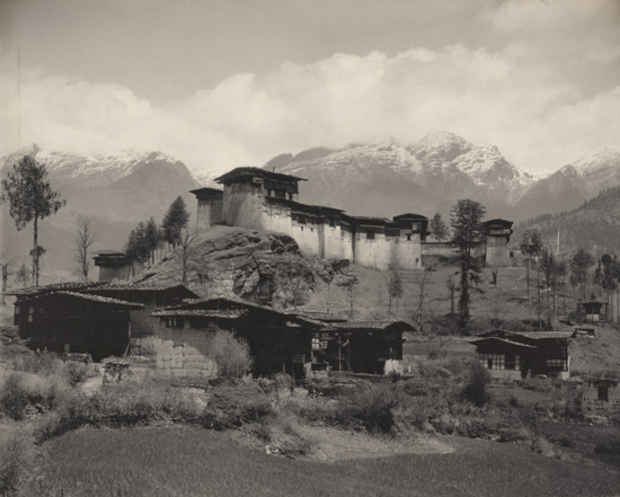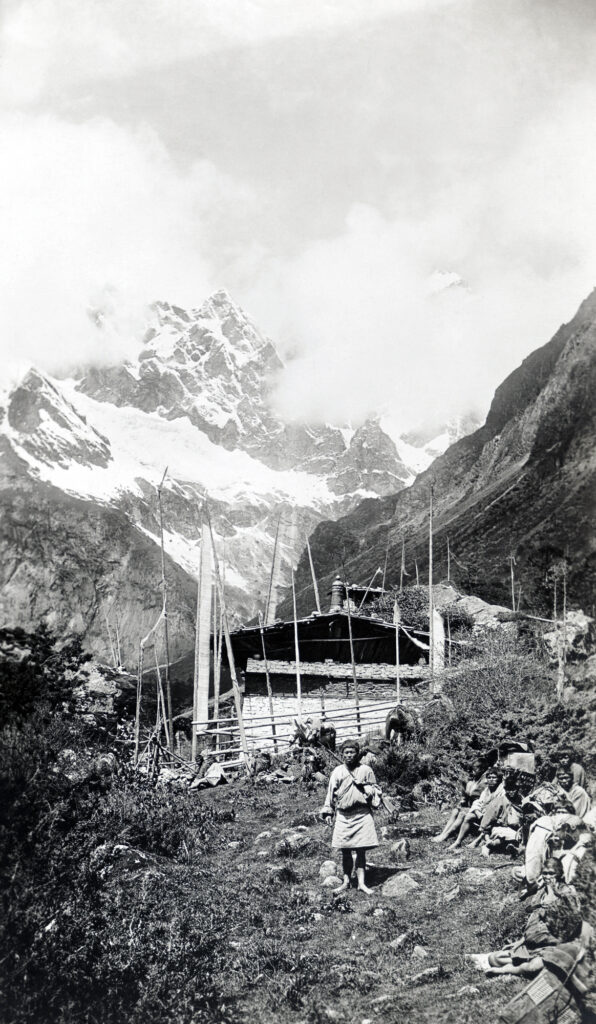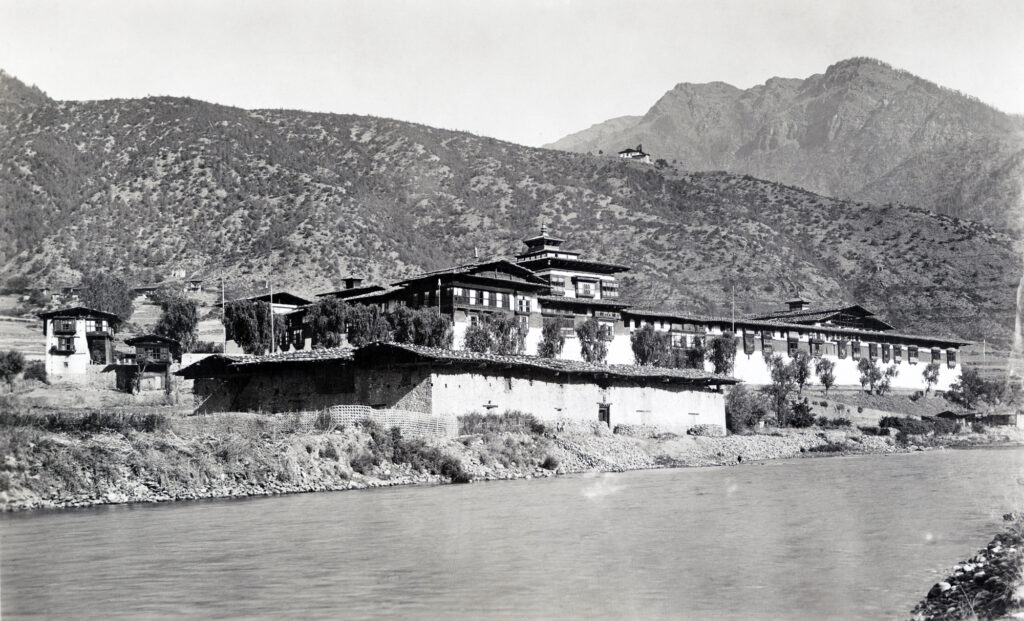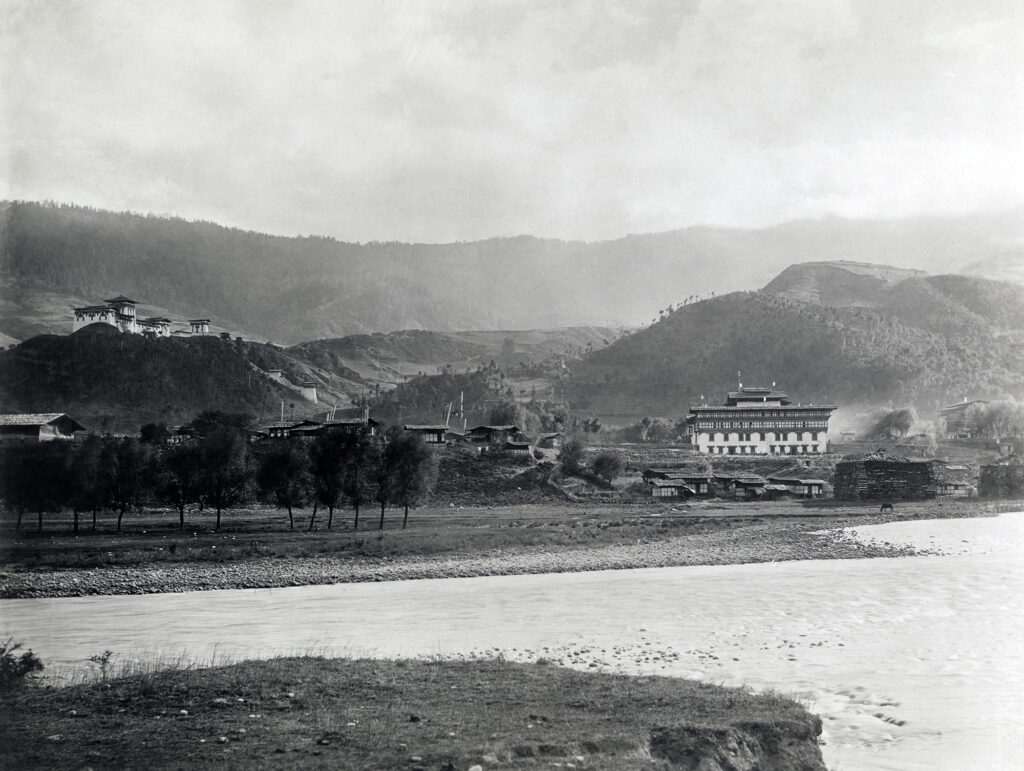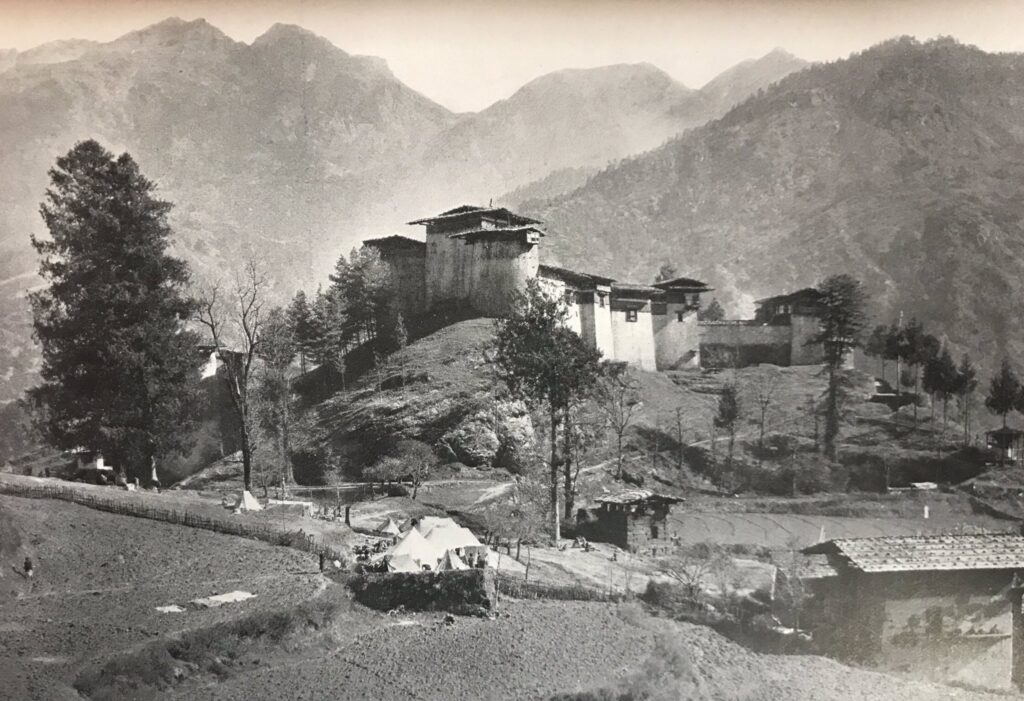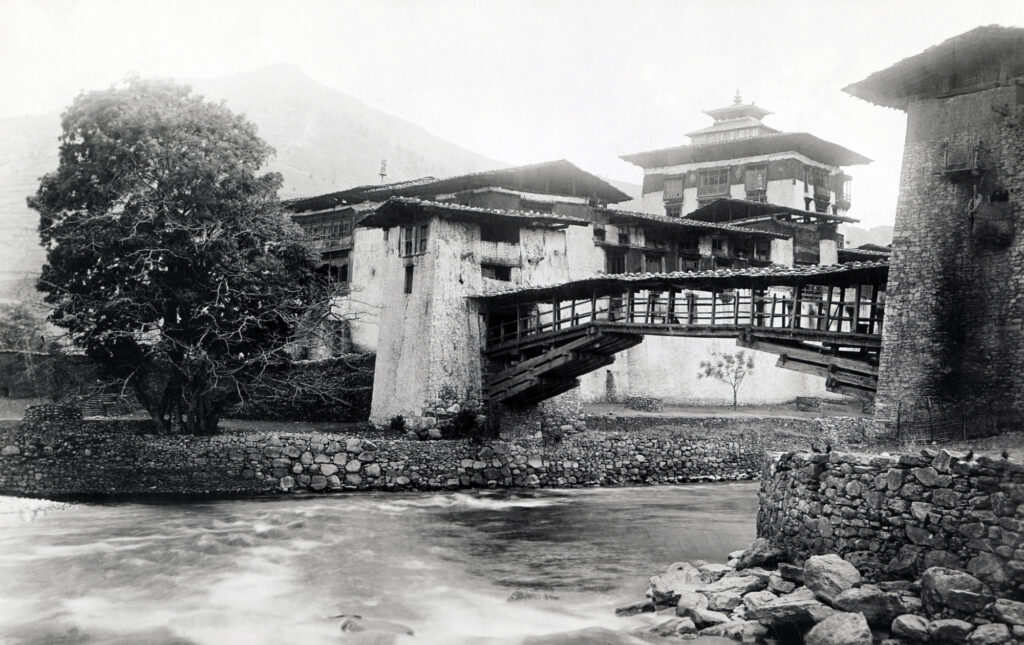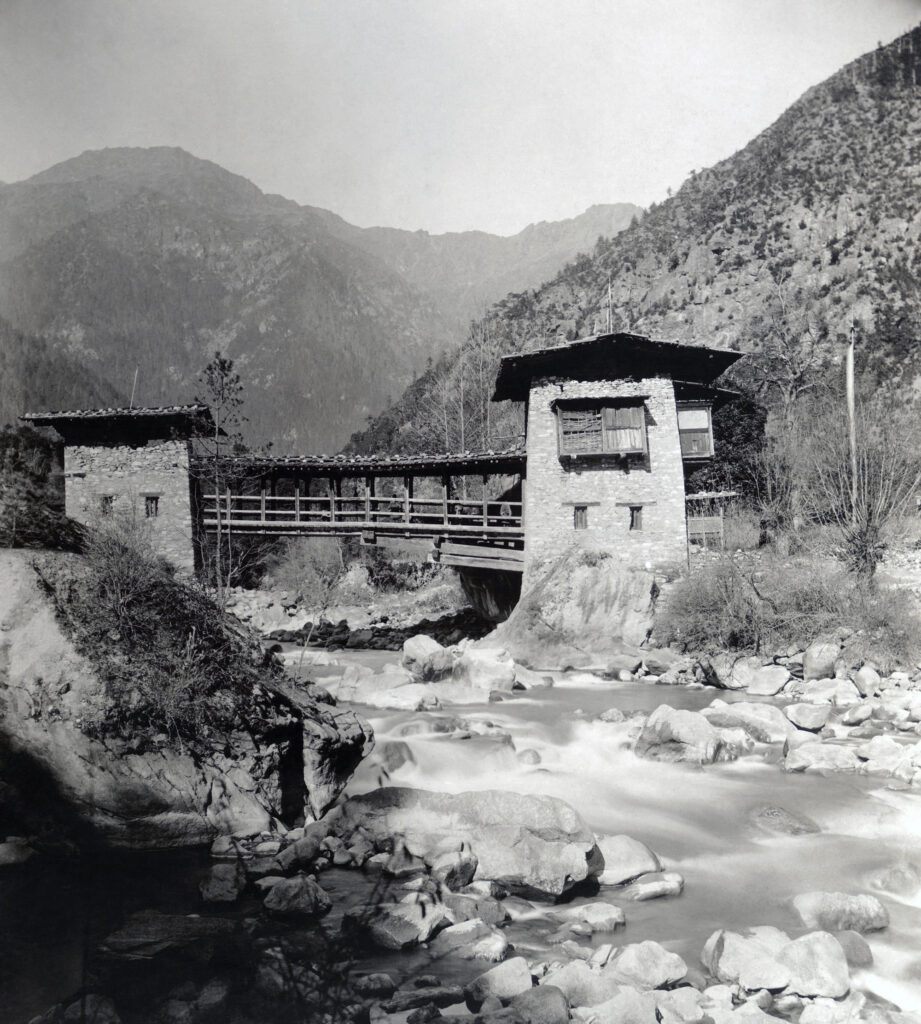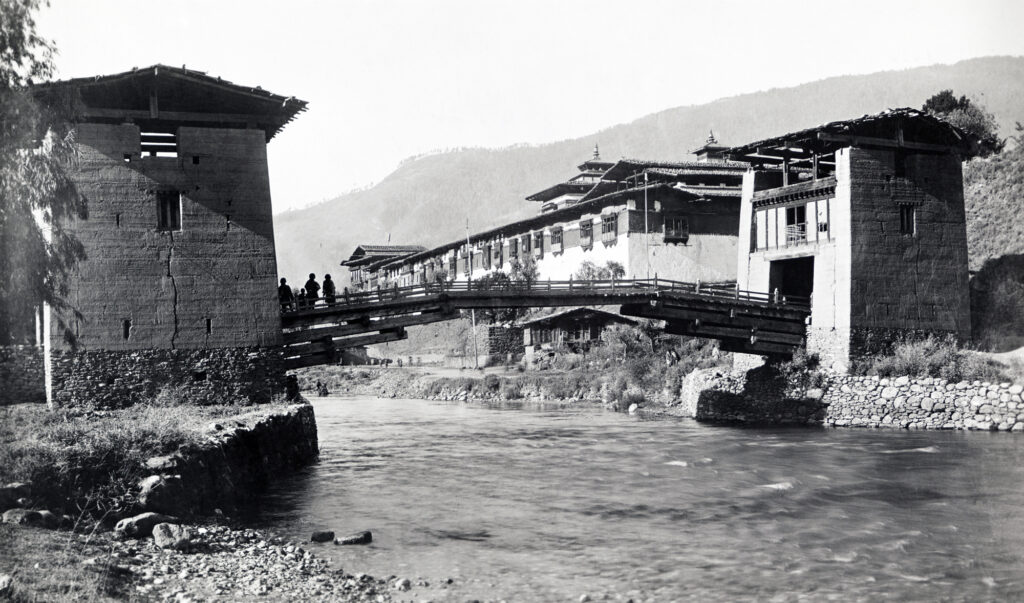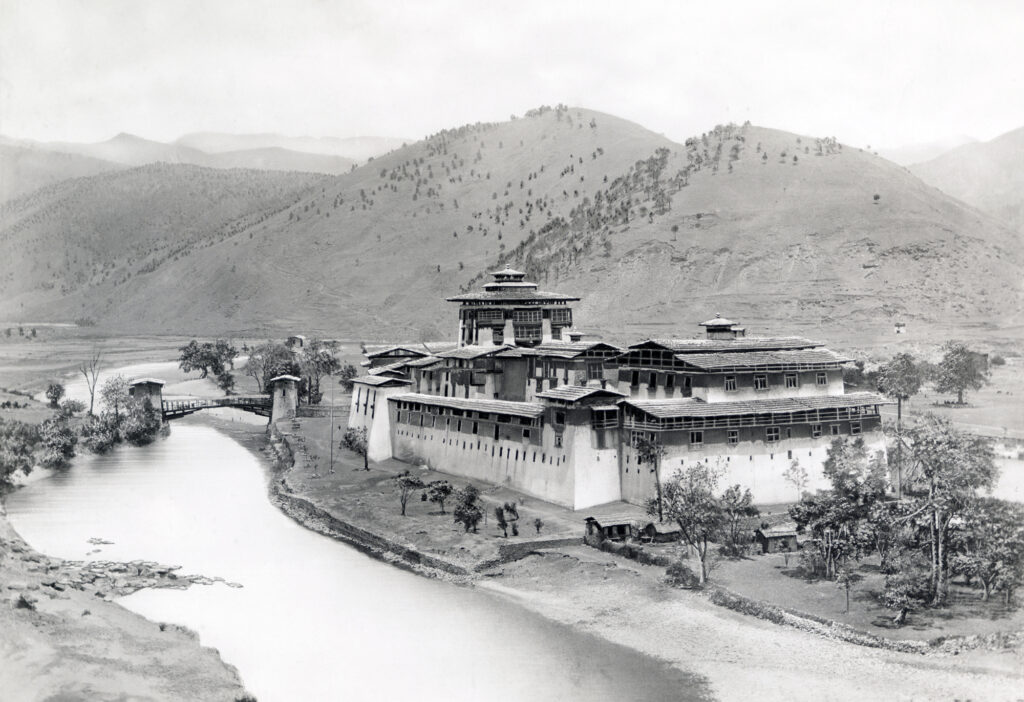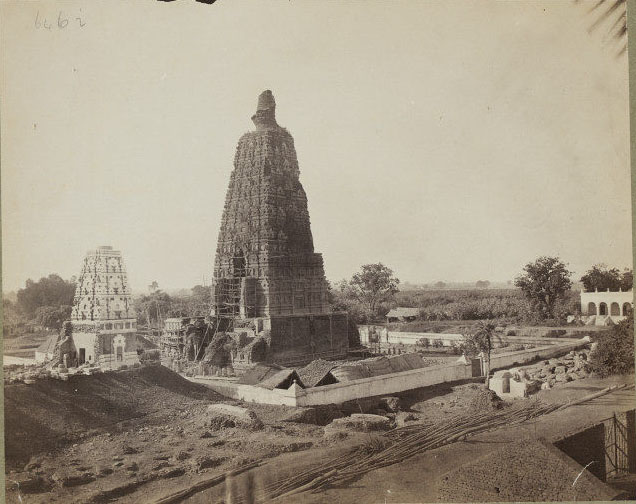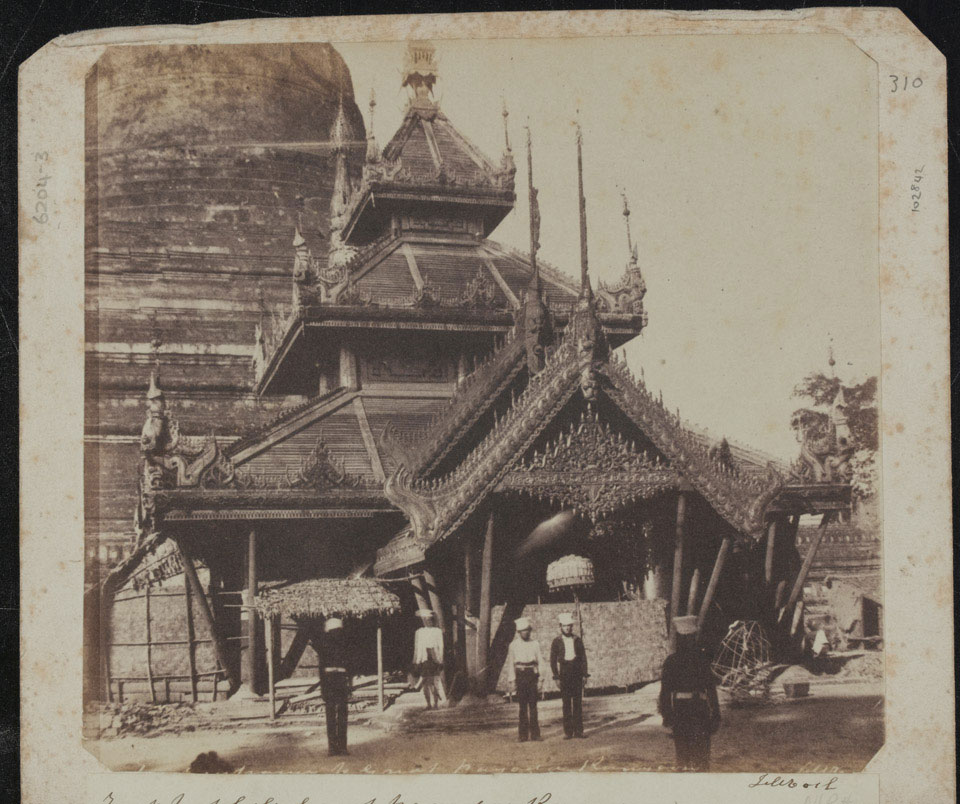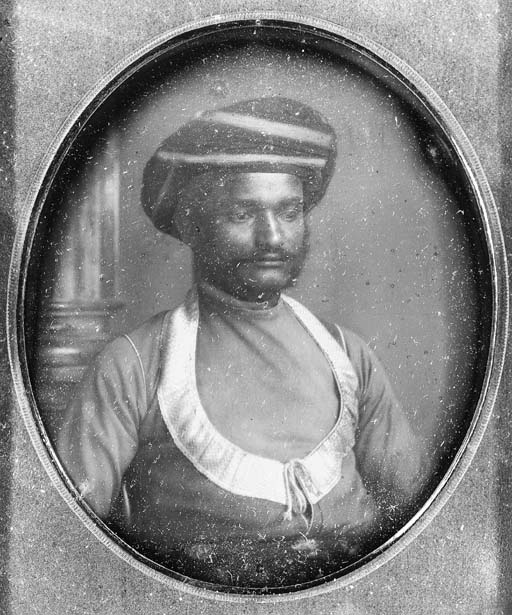John Claude White (1853 – 1918) was an engineer, photographer, writer and civil servant in British India. He travelled extensively in the Himalayas shooting with glass plates on a large-format camera. For twenty years he was stationed in Gangtok, Sikkim as the first British political officer overseeing the British interests in the states of Sikkim, Bhutan and Tibet.
A dedicated and passionate photographer, John Claude White was born in Calcutta and spent his teenage years studying in Bonn, Germany. In the 1880s John Claude White was exposed to the mountaineering and developed an eye and sprit for the beauty of the mountains, valleys, glaciers and rocks.
White acquired his skills in photography from the numerous joint pictures taking a trek in the Himalayas with Theodore Julius Hoffman one of the partners of Johnston and Hoffman Studio in Calcutta. He travelled everywhere with his bulky photographic gears, documenting his explorations.
Initially Hoffman and white started the Himalayas exploration jointly from Darjeeling and they proceeded through unexplored regions to Zemu glacier on the east face of the Himalayan peak Kanchenjunga, the third highest mountain in the world.
White’s work is unique and different, many photographers like Samuel Bourne, Baker & Burke, Johnston and Hoffman, made multiple trips to the Himalayas, but they only detailed people, architecture and culture in stunning photographs but very few mountain photos have been taken or published. White, on the other hand, mastered the art and was considered a pioneer of mountain photography.
John Claude White spent weeks travelling and photographing every corner, trekking each valley, and climbing all mountains pass in Sikkim, Tibet and Bhutan. He lived with the people and produced some of the most spectacular views of the panorama of the mountains in light and abstract form.
The transportation of the equipment was challenging. White and his contingent of porters used three mule loads only for transporting large 13X10 Thornton-Pickard Ruby field camera, large tripod, innumerable plates and chemicals for preparing glass plates.
John Claude White photographs illustrated the article that he wrote on Tibet, Bhutan and Nepal. These photographs were published in National Geographic Magazine in 1914 titled “Castles in the air experiences and journeys in unknown Bhutan”. Thirty-two of his photographs were published by the National Geographic Magazine.
Johnston and Hoffman, the leading photography studio which was established in Calcutta around 1882, printed and owned the copyright for most John Claude White’s images from glass plates and published in the lavish two-volume set of carbon prints album Tibet and Lhasa (1905). Most of the glass plates and prints stored with Johnston and Hoffmann studio in Calcutta were destroyed by fire in 1990. In the entire collection, only 200 of white’s works are known to have survived. Johnston & Hoffmann in Calcutta and Herzog & Higgins in Mhow, marketed prints worldwide.
White’s images offered rare glimpses into these isolated Himalayan lands, illustrated in his articles on Tibet, Bhutan and Nepal. White’s collections can now be found in The British Library and the Royal Geographic Society in London, The Newark Museum in New Jersey, the Peabody Essex Museum in Salem, Massachusetts and the Philadelphia Museums of art.
Reference
https://rubinmuseum.org/events/exhibitions/a-british-life-in-a-mountain-kingdom
In the shadow of hte Himalayas, Tibet, Bhutan, Nepal, Sikkim, A photogrpahic record by John Claude Whtie 1883-1908, text by Kurt Meyer and Pameral Deuel Meyer
Photography as Event: Power, the Kodak Camera, and Territoriality in Early Twentieth-Century Tibet, Simeon Koole, Society for the Comparative Study of Society and History 2017

